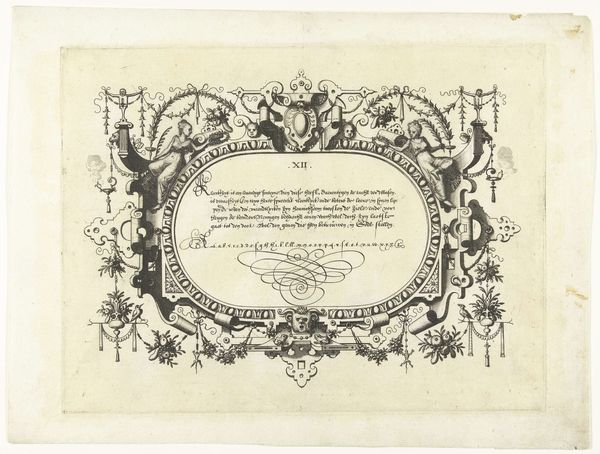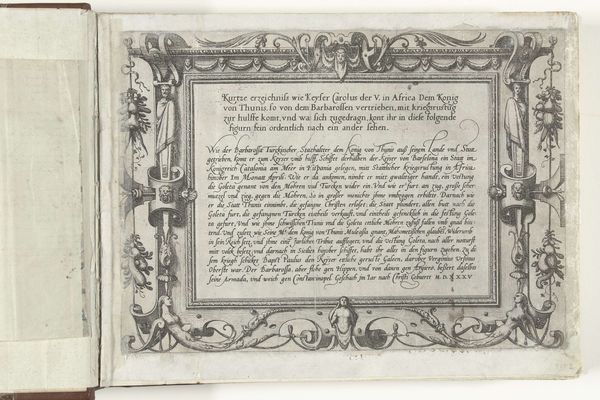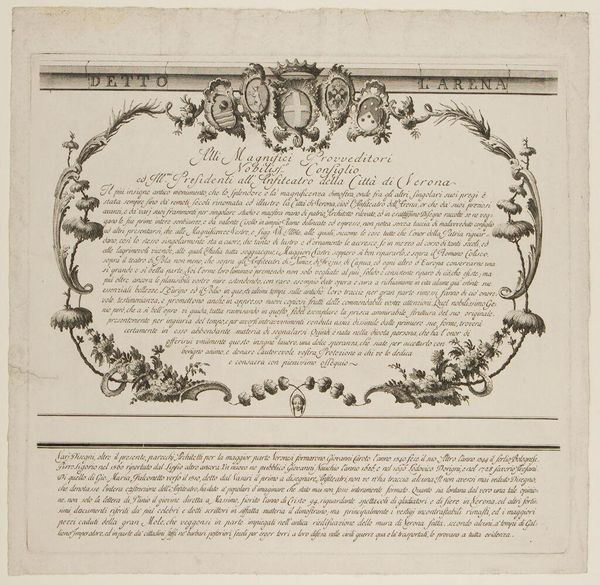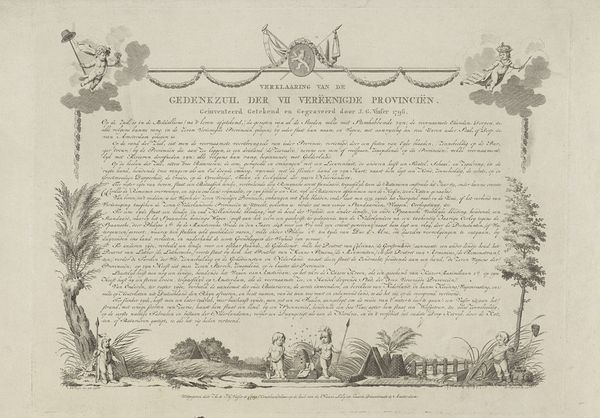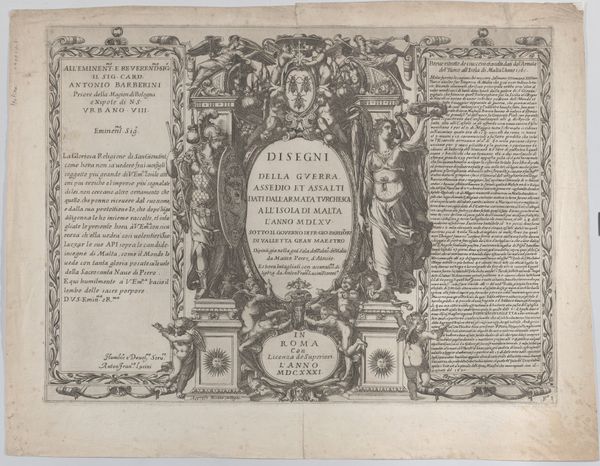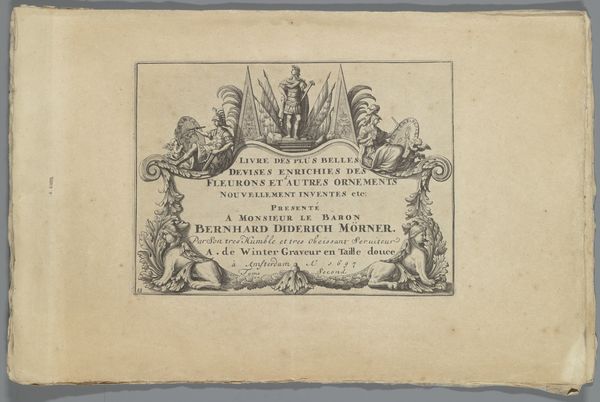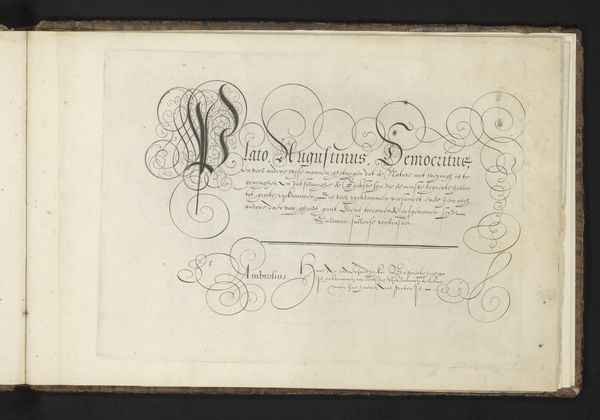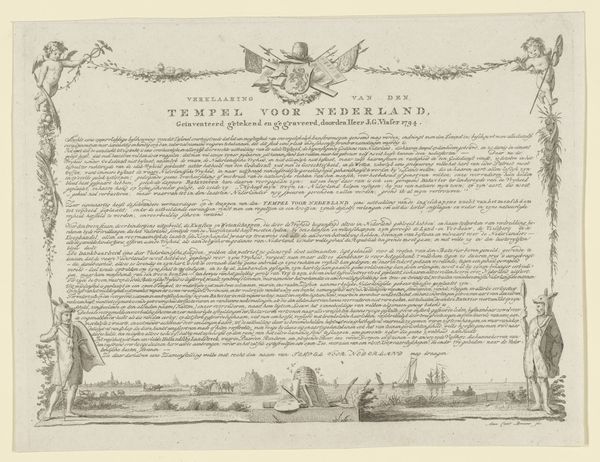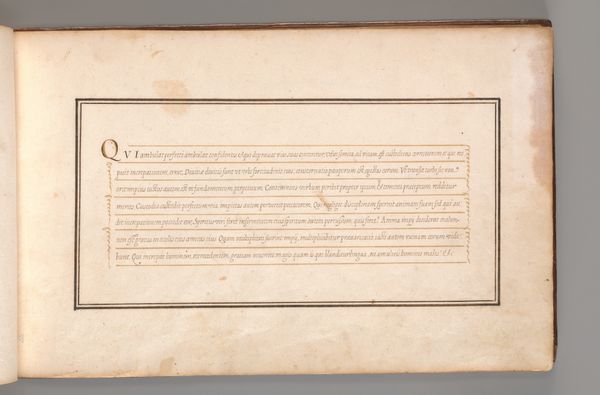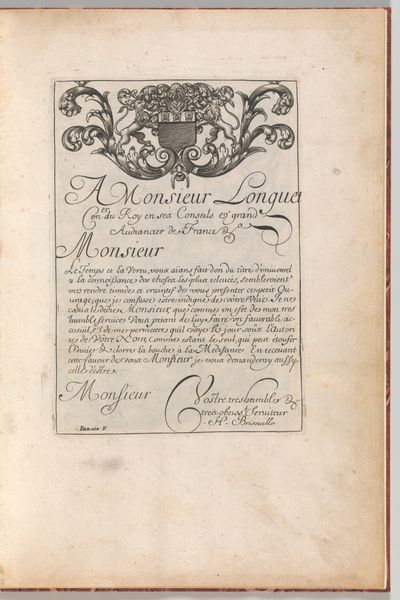
print, engraving
#
baroque
# print
#
history-painting
#
engraving
#
calligraphy
Copyright: National Gallery of Art: CC0 1.0
This frontispiece dedicating the work to Pietro Strozzi was etched by Antonio Tempesta around the turn of the 17th century. It’s made from a copper plate; the artist would have painstakingly cut into the surface with specialized tools. The incised lines hold ink, which is then transferred to paper under great pressure, creating a reversed image. Look closely, and you can see how the material and process influence the final result. The rigid quality of the metal plate allows for incredible detail, evident in the fine lines defining the figures and ornate border. The stark contrast between the ink and paper creates a dramatic effect, typical of prints from this era. But beyond its aesthetic qualities, consider the social context. Printmaking was crucial to the circulation of ideas and images in early modern Europe. The labor-intensive process of creating a copperplate meant that skilled artisans like Tempesta played a key role in disseminating knowledge and shaping visual culture, reaching a wider audience than a unique painting ever could. Ultimately, understanding the materials, methods, and context of creation enhances our appreciation of this print, bridging the gap between art and craft.
Comments
No comments
Be the first to comment and join the conversation on the ultimate creative platform.
